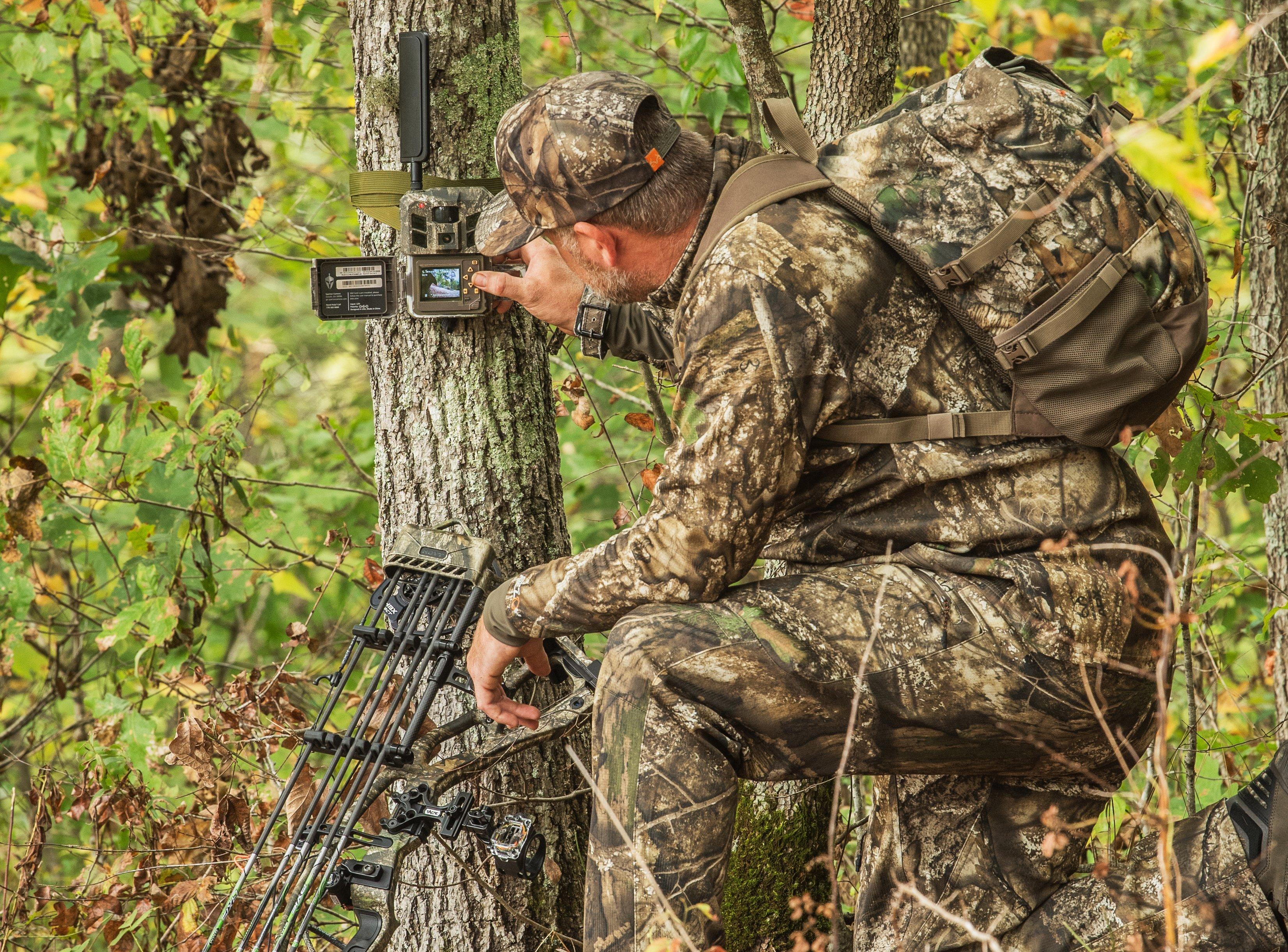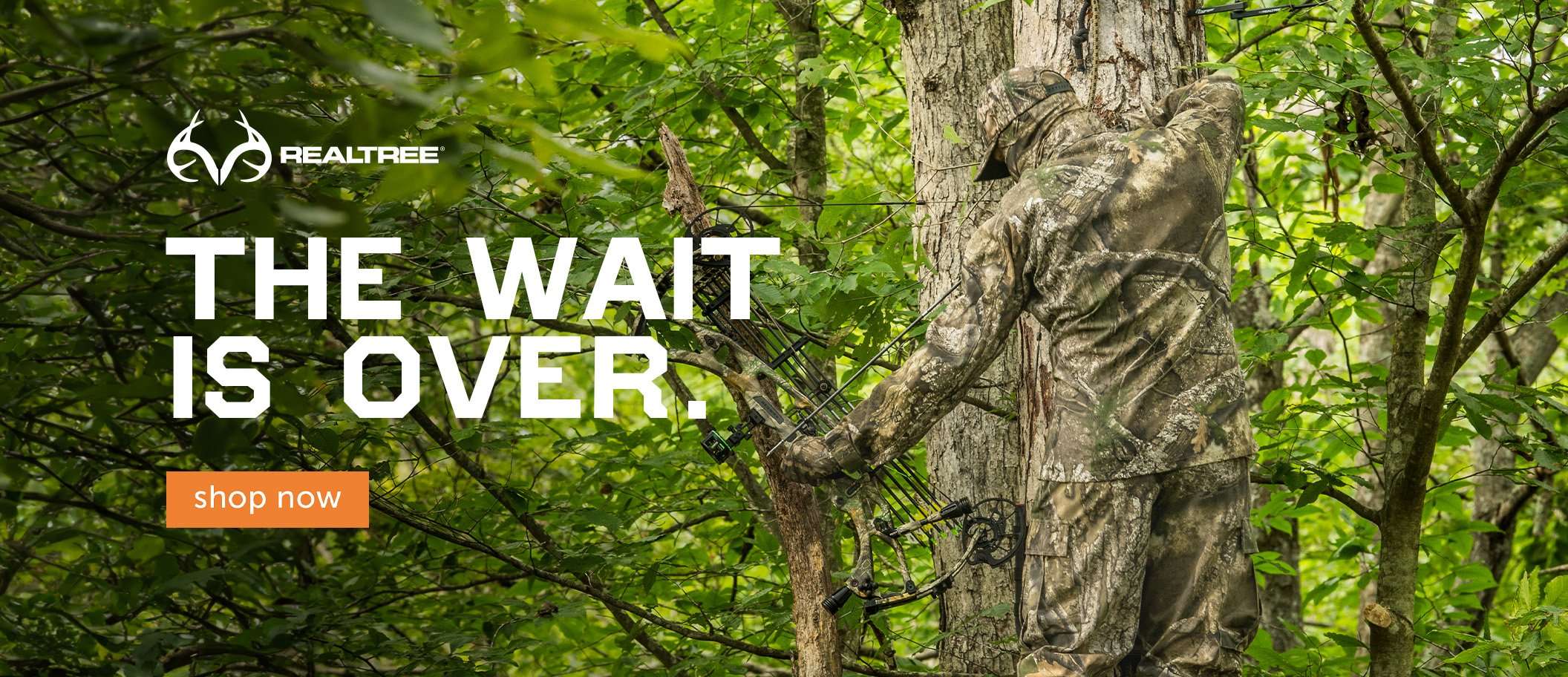Realtree pros give their best advice for dialing in on big deer in the early season
Over the past 10 years or so, hunters have taken a lot of pride in shooting “meat bucks.” I’m all for subsistence hunting. Hunting for meat is a lot like gardening. But I think it’s important for us, as hunters, to never lose the desire for something big even when we’re trying to fill the freezer. Like with most aspects of life, a middle ground is important.

If you’re in search of a mature buck this season, these tips from the Realtree experts will help you fill your tag. Image by John Hafner
My personal standard is to only shoot big bucks or does for meat. I like to leave little twin-twigs walking in the woods, hopefully surrounded by a high-protein diet to grow that rack for years to come. Since I end up shooting a lot more does than bucks this way, I polled some of the Realtree pros to give me some tips for homing in on the big boys.
UNDERSTANDING EARLY-SEASON BRUISERS
Understanding buck behavior is crucial to being in the right place at the right time. Jason Say knows big bucks as well as anyone. The host of “All In” says the early season is often overlooked by hunters because of a buck’s behaviors. “There are two times a year when big bucks act like young bucks: during the rut and early in the season when they haven’t been pressured for eight months,” he says “They’re oblivious to danger and not as jumpy.” Say likes to find and target big bucks before the season and go after them hard the first few days after the archery opener. He says they’re a different animal that time of year.

Jason Say, host of “All In” likes to find a buck early and hunt the first few days of season before the deer are pressured. Image by Bill Konway
“I used to take off work during the rut, but now I tell everyone to find that big buck early and take off the first week of season,” he says. “Big bucks in the early season lay around all day and feed in the afternoon and throughout the night, usually in the same places each day. Their patterns are more consistent than other parts of the hunting season, and that makes them vulnerable.”
Joel Burham agrees. He is the founder of Whitetail Fit, a lifestyle brand and YouTube channel that focuses on promoting a healthy lifestyle for hunters. He says that finding a buck’s bedroom is step number one. “Big bucks are always going to find the best bedding spot,” he says. “Small bucks are more lenient and more willing to bed anywhere but not big bucks. I’ve seen big bucks bully the small bucks out of a spot with the best setup. They want a spot where they have physical cover, the wind covering their back, and the ability to see in front of them.”
CHECK OUT OUR LATEST CAMO PATTERN: REALTREE APX
Burham feels that these can be the nastiest spots on your property. “On public ground, I like to key in on plots of land with a water source running through it,” he says. “I find bends and s-curves in the river. I’ve found a lot of bucks bedding on those points. The bends usually have dense vegetation, and they will bed on either bank depending on the wind direction and the cover.”
TOOLS AND TECHNIQUES FOR SCOUTING BIG BUCKS
Trail cams have changed the game for deer hunters, but knowing how to properly use them can stack the deck even further. Bryan Brown is the producer of Realtree Roadtrips and he has a shortcut for taking inventory over a herd. “I break it into two categories, and you need to learn your state’s regulations,” he says. “If you’re hunting in a state that allows baiting, I like to put a camera and a bait pile on about one out of every 80 acres that we’re hunting. I don’t get specific about areas. I just try to put them close to bedding. Some states won’t let you use bait but will allow a mineral lick. This is a great way to just know if there’s a buck in the area that you would be interested in hunting.”

Bryan Brown, Realtree Roadtrips producer, says that putting trail cameras on feeding areas is a great way to locate big bucks quickly in a new area. Image by Bill Konway
In non-bait states, Brown suggests finding where the deer are feeding. If a piece of ground holds agriculture, the trails leading in and out of the field are a great place to put a camera. Additionally, he says all hunters should scout the oak trees on their property and be in those spots ready to hunt. When the acorns start dropping, bucks will usually leave ag fields and primarily feed on acorns. Also look for old rubs and scrapes. If you find acorns and old sign, that’s a great spot to put a camera for the first few weeks of the season. It’s also a great way to have a presence in an area if the wind isn’t right and you can’t hunt it to see what’s using that spot.
“Don’t just rely on trail cams though,” he says. “Sometimes the best scouting you can do is from the truck with a pair of binoculars. You have to put in the time, cast a wide net, and pattern the deer once you find the big ones. Your trailcams should complement your other efforts, not carry the entire scouting load.”

Don’t rely solely on trail cameras. Sometimes the best scouting you can do is from the truck with a good pair of binoculars. Image by Bill Konway
Jason Say adds that some man-made intervention can also be a great way to know what’s on your property. “I’m a big food plot guy,” he says. “I do a lot of habitat management consulting as well, and I look at a lot of farms. In my opinion, food plots are the best places to hang cameras. If you have well managed plots, deer will be hitting those spots all year round.”
Say feels that diversity is key in a food plot. Split plots between multiple different plants to give the deer a variety. “I even have some fruit trees planted,” he says. “Deer key in on different foods at different times. You want to have a variety to give the deer a full menu. Half of my plots will be in a perennial blend, like chicory and clover, and I’ll plant brassica and oats on the other half. Sometimes I even plant winter peas. I also like to pair annuals with perennials.” If you do it right, you can set up cameras and have deer coming in all year to survey the herd and know where the big bucks are hanging out the most.
FROM THE CAMERA TO THE STAND
Locating target bucks is only one part of the battle. The next step is getting in close and being in your stand at the right time. “A lot of the times, bigger bucks don’t like moving until right at dark,” says Brown. “Younger deer are usually the first ones out. It seems like that the best chance at a trophy is right at the last five to ten minutes of light. While that isn’t always the case, they’re usually the last ones out of the bed.”
Brown gives some advice to hunters who don’t see their target buck during daylight hours. “If your target buck is coming out late and you can’t get a shot on him right before dusk, you have to go deeper towards his bed and intercept him,” he says. “If you know where he’s coming from, you can move up the trail and try to be wherever he is right at sundown.”
Don’t Miss: WHAT IT’S ACTUALLY LIKE TO HUNT FOR A LIVING
Burham agrees but feels a little differently. “I hate using the word ‘aggressive,’” he says. “But sometimes a shift in tactics is necessary if you aren’t seeing target animals during daylight.” Burham instead describes his hunting style as ‘tactical’ because if you’re overly aggressive, you can easily blow out a big buck. He pays extra careful attention to the wind, too. When you’re after a big buck, you can’t get away with marginal winds, and it’s critical to enter and exit your stand without being detected.












